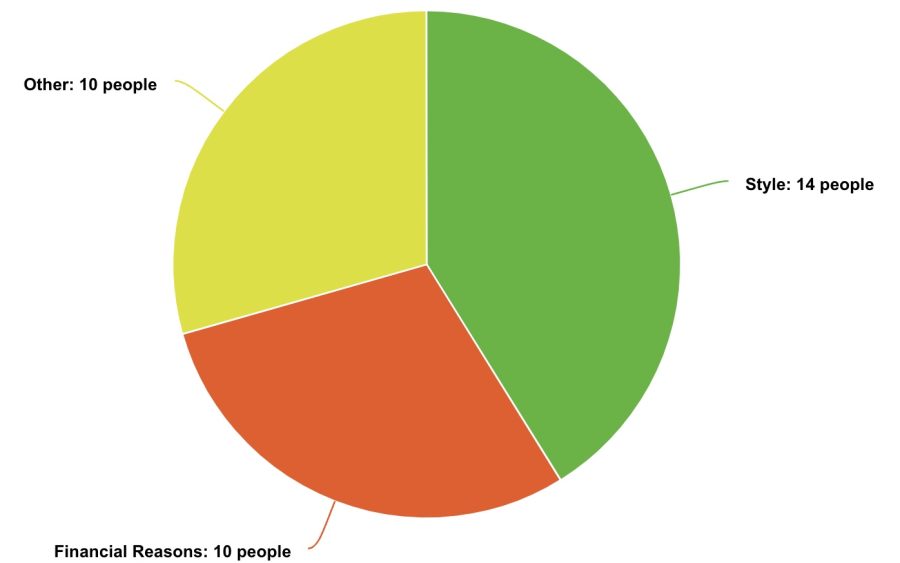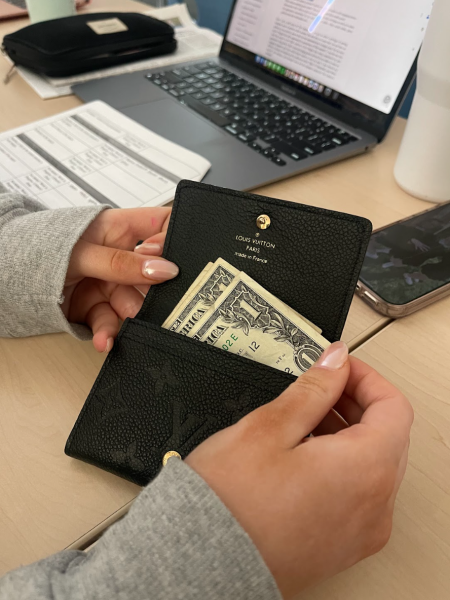Is thrifting taking away from those who need it?
The Catalyst / Ashley Turner
Out of 34 NDB students that were surveyed, 10 thrift shop for financial reasons, 14 for style and 10 for other reasons.
Thrifting has had a resurgence in popularity among middle and upper class individuals. The whole concept of thrifting is to repurpose second-hand clothing by selling it to the public at an affordable cost, specifically to those who are lower income.
Thrift stores have also attracted those looking for unique clothing, as these stores often acquire vintage, designer and peculiar clothing styles that are not often sold at other stores. Influencers such as Emma Chamberlain and LaurDIY have shared their findings on social media that motivate others to go out and find thrifting gems for themselves.
Many say that thrifting is unjustly taking clothes away from those who need them. However, when thinking of how many clothes are manufactured in a day, it would make sense that there is a surplus of clothes. A great percentage of these clothes will end up in landfills, even if they are donated. To put this in perspective, there will never be a shortage of clothing. Thrifting helps to prevent those clothes from ending up in a landfill and, furthermore, helps put these clothes to good use.
Another reason why thrifting is economically sustainable is that it is the best alternative to fast fashion, a phenomenon that has come with a high demand for cheap clothing to keep up with the trends. Fast fashion is produced in unethical ways, so it is advisable to avoid it. Rather than contributing to an unhealthy process of consumerism, thrifting ensures low prices for clothes that go back into someone’s closet rather than to a toxifying landfill.
A unique place to find these low prices and combat clothing waste is the Goodwill bins, also known as Goodwill Outlet stores. While browsing the aisles of Goodwill may seem odd to shoppers in favor of traditional retail stores, they can be seen as a true hidden gem.
Traditional retail stores may have sales or clearance racks, but Goodwill bins offer deeply discounted prices on all items. The cost of the items in the bins range from just a few cents to a few dollars per pound. This means that shoppers can often purchase high-quality items for a fraction of the cost they would pay at a traditional retail store.
Retail stores are notorious for contributing to the fast fashion industry, which can have a big impact on environmental degradation. Goodwill bins, on the other hand, provide a more sustainable option for shoppers. By purchasing gently used items from the outlets, shoppers are helping to reduce the amount of waste that ends up in landfills. Additionally, shoppers are supporting a nonprofit organization that is committed to creating job opportunities and providing community services.
There are also other sections of thrift stores that include gently used home decorations or appliances that will end up in a landfill if they are not sold within a certain period of time. By purchasing discounted items, whether it be clothing or otherwise, one is not taking away from anyone else due to the sheer amount of “things” that go to waste if they are not bought.
Overall, thrifting is financially and economically beneficial. While thrifting, be sure that it is out of good intentions rather than hoping to take advantage of the low prices.

Ashley Turner graduated from NDB on June 1, 2024 as a Managing Editor on the Catalyst team. She played volleyball for the school's varsity team,...

Francesca Arbelaez was a Senior Editor her senior year and 2024 was her third and final year in the journalism program. Beginning her sophomore year, she...






